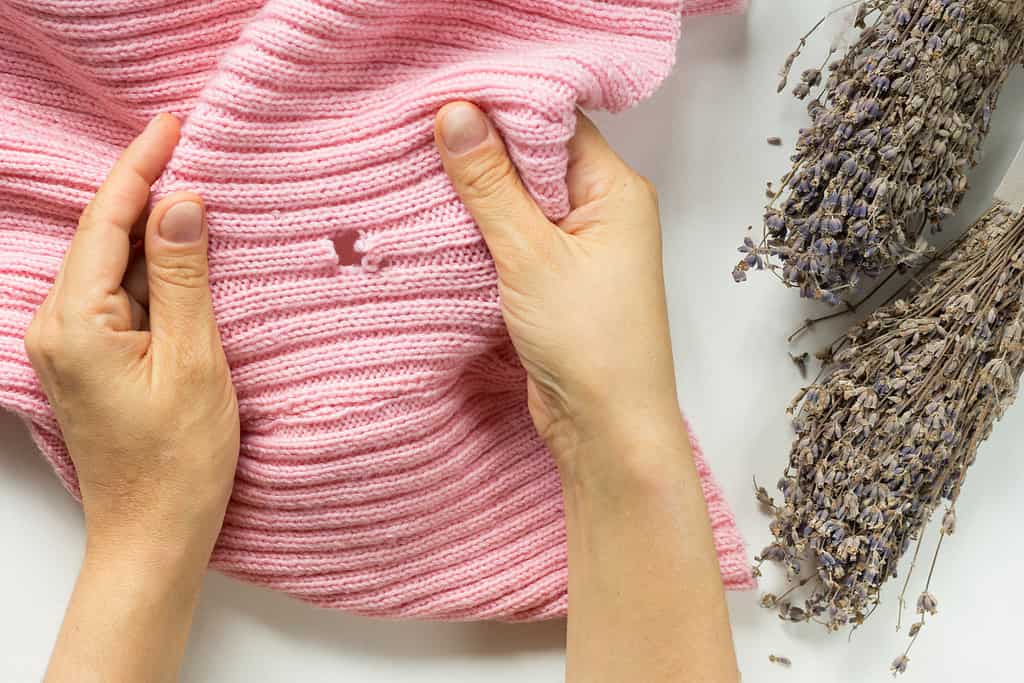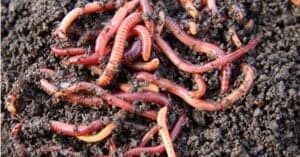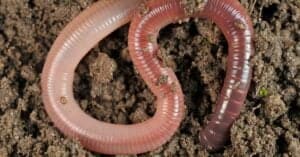Many household items may be used for dual purposes. Dishwashing detergent, for example, frequently makes its way into plant care to remove pests. But one pesticide product that should never be used in any way except as the label instructs is the lethal mothball. The small balls seem innocuous to many, but they can be deadly for humans, not just insects. Here are the reasons you should never use mothballs to repel bugs or rodents.
History of Mothballs

Once upon a time, mothballs were pretty useful for
keeping your clothing safe from insects
. But nowadays, they’re pretty much obsolete. Never use mothballs to repel pests for safety reasons.
©Bowonpat Sakaew/Shutterstock.com
If you don’t hear a lot about mothballs these days, there’s a reason for that. In times past, when air conditioning didn’t exist, folks opened their windows and doorways to let in cool air to help regulate temperatures. These open doors and windows, of course, invited in insects, such as moths, and created a new problem. Moths were eating their clothing and linens! The need arose and mothballs were created.
Today synthetic fibers don’t particularly draw moths to your clothing and linens, so mothballs aren’t particularly useful. Some folks do advertise mothballs as repellents for rodents, insects, and other pests, but this is not safe. In fact, using mothballs these ways is illegal.
How Mothballs Work
Containing ingredients such as camphor, naphthalene, and paradichlorobenzene (dichlorobenzene), mothballs are pesticides. They come in solid, round, or disc forms and should be used to deter moths from eating woolen goods. The intent is that the chemicals will keep moths away or kill them, and prevent moth larvae from growing near the mothballs.
They should be placed in airtight containers and kept in closets, storage spaces, and other areas where moths go after your goods. They are not intended for outdoor use, open-air use, or other use in any way.
Reasons You Should Never Use Mothballs as Deterrents

Mothballs aren’t harmless little things. They’re actually regulated pesticides and quite dangerous for both humans and animals alike. Never use mothballs apart from directions on packages: in airtight containers.
©Worledit/ via Getty Images
There are numerous reasons you should never use mothballs as pest deterrents. These are the four major reasons and most important.
1. Mothballs are Regulated Pesticides
Mothballs may seem harmless enough, but they are actually regulated pesticides. Since they come in solid form, most folks don’t think of them that way. However, over time, the mothballs break down into gas and release the pesticide chemicals into the air.
Mothballs are regulated by the Environmental Protection Agency (EPA) and using them in any way not intended is actually illegal. Labels on mothballs do not allow for animal repellent.
2. Mothballs Can be Dangerous to Humans and Animals Alike
The number one reason you should never use mothballs to repel insects or pests is this: mothballs are dangerous to humans and animals alike. Touching mothballs, inhaling the fumes, or otherwise coming into contact with mothballs can kill.
Small children find themselves at risk of eating mothballs, as well, as they look like candy. Pets may eat them, mistaking them for treats, or may play with them thinking they are toys.
Naphthalene, the main ingredient of mothballs, is a toxic substance produced when things burn. Cigarette smoke, car exhaust, and forest fire smoke all contain naphthalene. When this toxin enters a human or animal body, it breaks down into alpha-naphthol and damages red blood cells. The carriage of oxygen throughout the body is disrupted. Liver and kidney damage may occur. This toxin spreads through the blood to fat, blood, and breast milk and is considered by the World Health Organization (WHO) as a potential carcinogen to humans.
3. They Dissolve in the Rain
Often, folks want to put mothballs outdoors to deter rodents and insects from causing damage to buildings. But mothballs melt when they get wet and wind up spreading the poison. This infects the ground and therefore your plants and your own animals. It may also cause harm to other animals not considered pests.
4. Mothballs Don’t Work

Let’s face it. Mothballs don’t really keep moths away, anyhow. So, rather than risk your health or the health of a loved one, skip the mothballs and find an alternative that might actually do the trick.
©Tatiana Foxy/ via Getty Images
Mothballs don’t work particularly well, either. They don’t get rid of mice and they don’t really deter moths from eating your woolen goods.
There are some reasons for this.
- Mothballs don’t contain high enough concentrations of naphthalene to actually deter pests. But any higher dosage would be even more dangerous in your home.
- Many animals (and people) dislike the smell of mothballs, yet they don’t really keep the animals and insects away. Instead, they may annoy or harm animals, causing other issues.
- In many cases, using mothballs to deal with rodents is also illegal. This means that not only don’t they work, but they also can get you in trouble.
You’re better off not bothering with mothballs at all. Instead, call an exterminator or find natural, safer means of pest control.
Proper Use of Mothballs
Only very specific safe methods for using mothballs exist. That is, mothballs should only ever be used in tightly sealed containers. This may seem counterintuitive, but this helps prevent you, your kids, and your pets from breathing in the toxic fumes. Never store them in loosely sealed containers, never leave them out in the open, and always wear a mask and gloves when handling them.
The photo featured at the top of this post is © Bowonpat Sakaew/Shutterstock.com
Thank you for reading! Have some feedback for us? Contact the AZ Animals editorial team.







